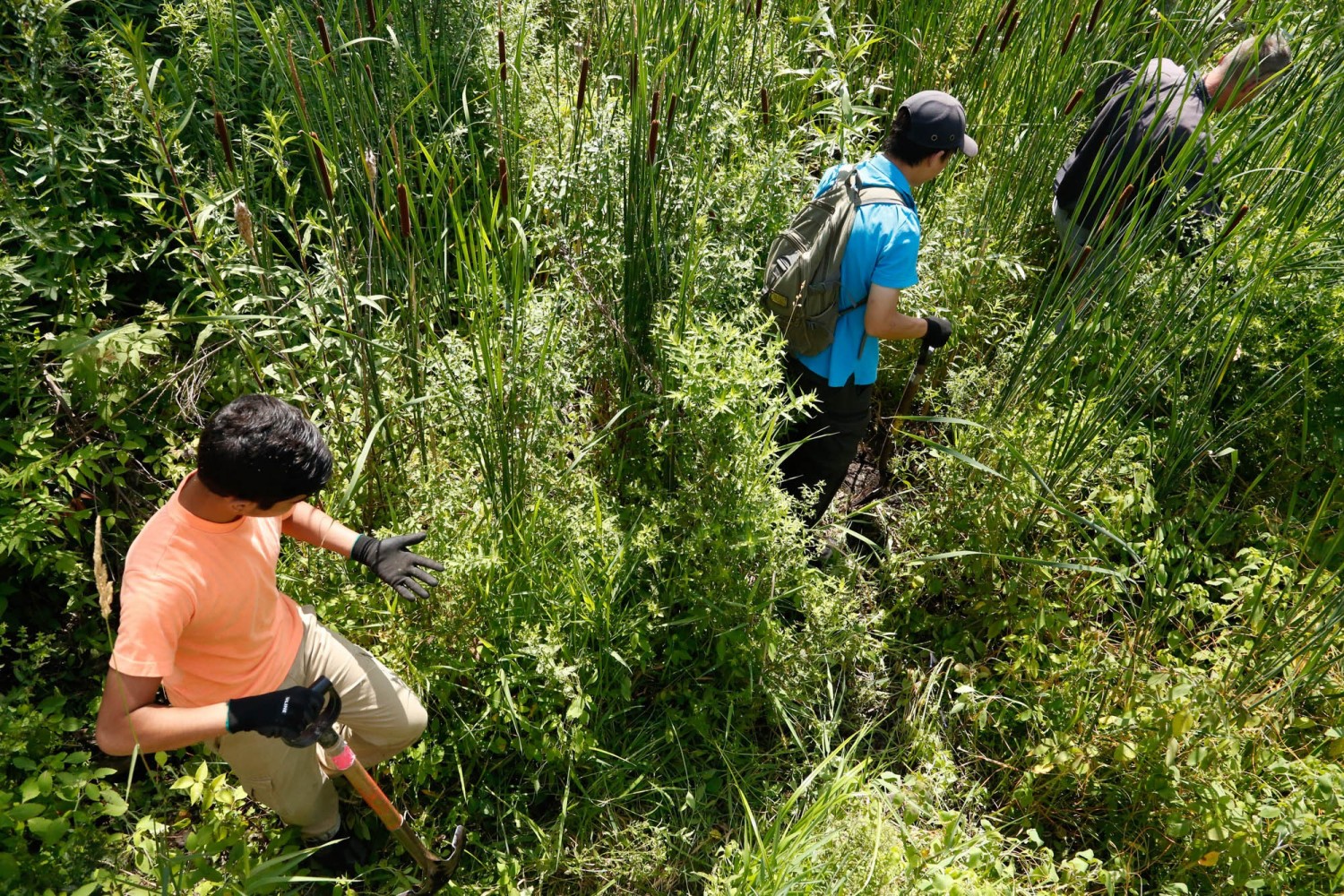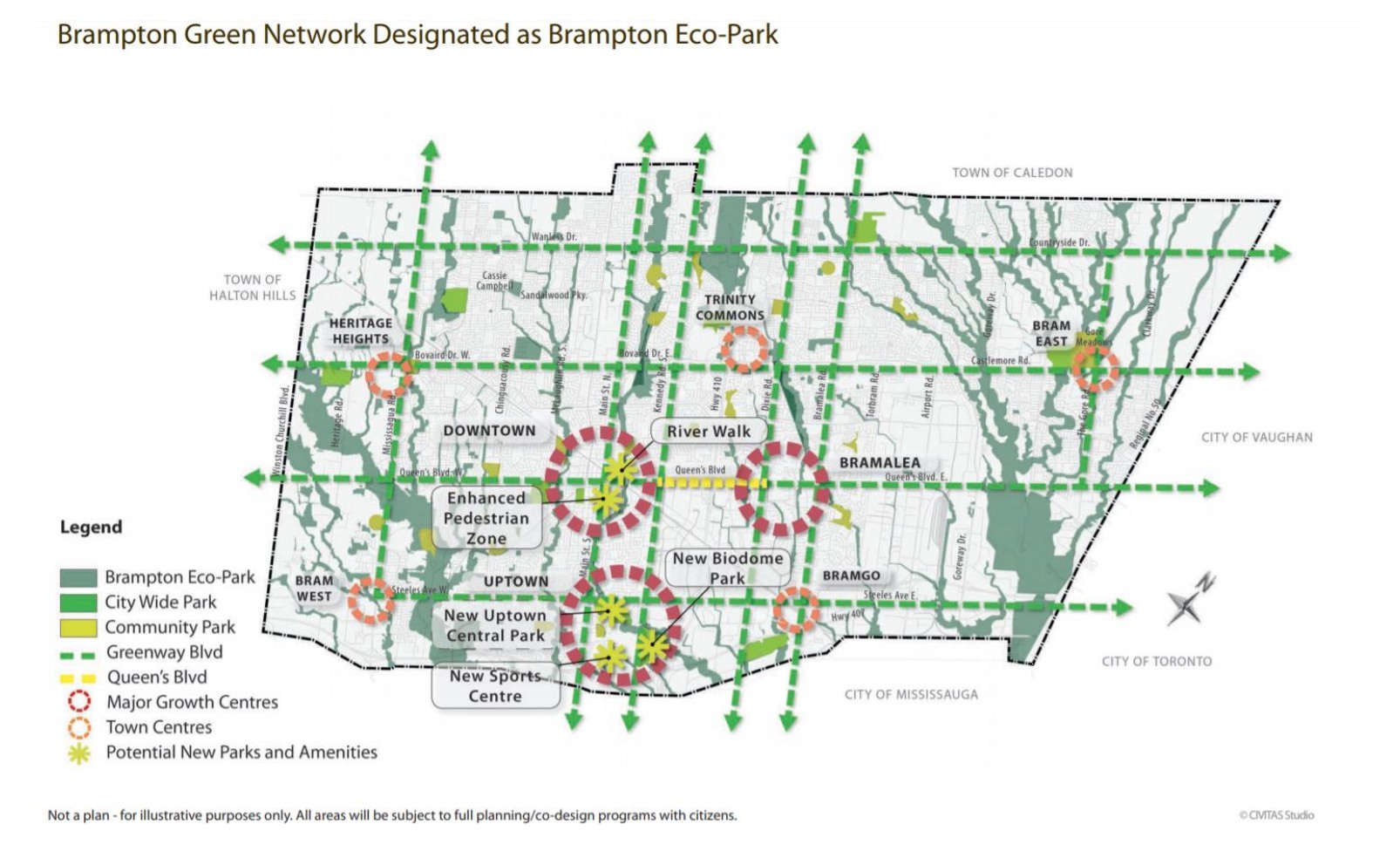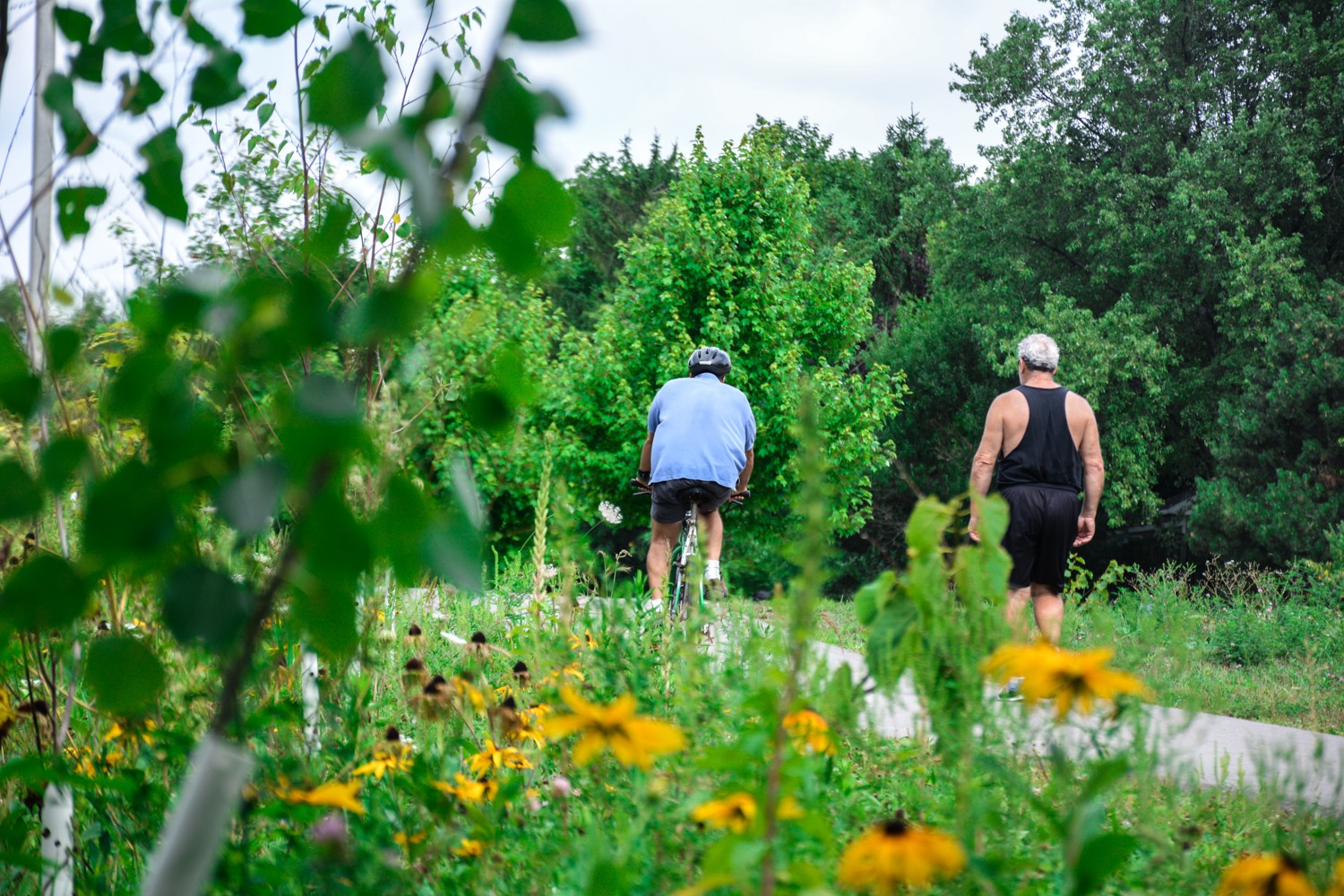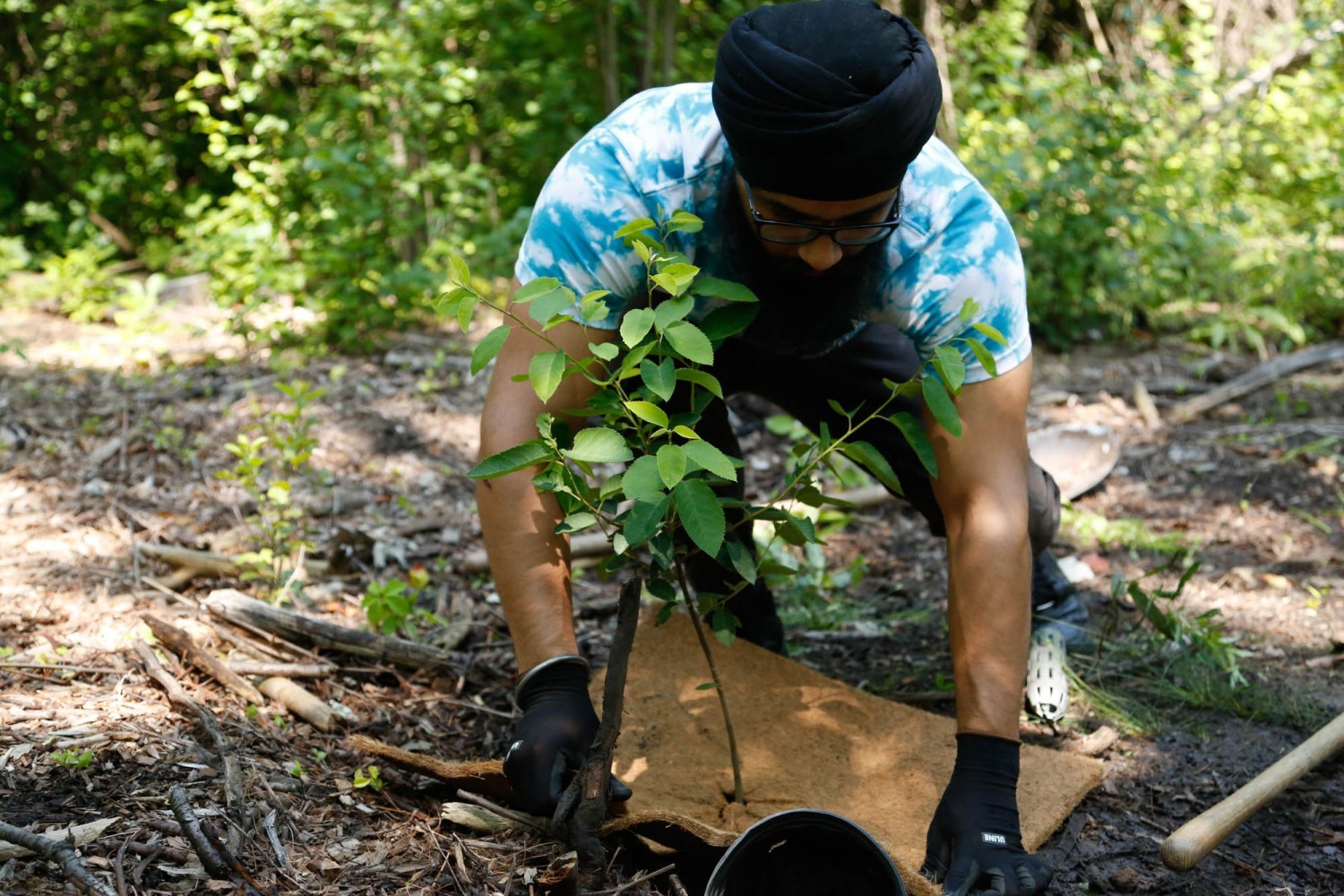
New environmental strategy lacks clear path to turning Brampton into green oasis
Brampton is thinking green.
A growing population, developments, and natural disasters have all led to a reduction in Brampton’s green spaces. According to Peel Region’s Urban Forest Strategy, population growth has resulted in a rise of housing and infrastructure development, in turn causing fewer trees to be planted, those of which are left to grow in compact spaces. Unable to reach their full potential, confined to smaller plots, trees have a shorter lifespan, and are removed from the Earth sooner.
Brampton has a busy industrial area in Ward 3, and many projects operating in the same sphere, which together impact the city’s limited green space. According to the Eco Park Strategy, less than 20 percent of land in Brampton is part of the natural heritage system, which benefits residents with water and air filtration, and provides a home for various plant and animal species.

Brampton has a collection of fragmented green spaces scattered among its highly developed areas.
On Jan. 29, council endorsed the strategy, with the goal of creating an eco park, which is a collection of natural spaces, including trees and lakes, that together strike a balance between “environmental and conservation use.” As part of Brampton’s 2040 Vision — the blueprint mapping out the city’s goals for the future, which includes adequate housing, jobs and an emphasis on the environment — the eco park is the latest initiative addressing green spaces. In the past, the city has put forward the Brampton Grow Green Environmental Master Plan (EMP), which aims to balance the natural and manmade through “environmental stewardship and heritage preservation.”
An eco space is a green area in the city where residents can enjoy nature. To qualify as an eco space, there are three requirements that must be met, including ecosystem maintenance, opportunities for social and environmental interaction, and minimal destructive impact.

The second criteria can be addressed through the implementation of trails and educational programs, for example. The strategy states “active recreational activities and features,” which involve sports fields, won’t be supported by the Eco Park Strategy, as these spaces can negatively impact natural features, leading to the green space being damaged.
For a city dubbed the cricket capital of North America, this could be an issue.
A cricket field has a rectangular patch of dirt in the middle of an oval field with a boundary on the perimeter, which can be marked with a fence, rope or white lines, usually made with paint or chalk.
Mayor Patrick Brown has said, on multiple occasions, he wants to bolster Brampton’s cricket reputation. The city has plans to make a cricket stadium at Gore Meadows community park. Last summer, the Global T20 Canada, a cricket tournament in its second year of operation, was played in Brampton. Following the event, Roy Singh, the man who brought the series to Canada, announced plans to build a stadium in the country dedicated to the game. According to the Canadian Premier League T20 website, there are a number of cities in the GTA who want this stadium to be built in their municipality, including Brampton, but no location has been finalized yet.
It’s not clear if stadium construction would have environmental consequences, no matter which city it is built in, but cricket could fall under recreational activities that aren’t supported by the Eco Park Strategy.
The document cites Brampton’s Andrew McCandless Park as a prime example of eco park principles. Andrew McCandless has a soccer and cricket field as well as skateboard ramps. With the eco park program bridging the city’s conservation measures and recreational policies, it is unclear how the park meets guidelines given its existing sports fields and activities.
This isn't the first time plans for the city involved two opposing points of view. In June 2019, the City of Brampton declared a climate emergency and, in the same meeting, advocated support for the proposed GTA West Corridor, positions which contradict one another.
The 2040 Vision emphasises the concept of “one-planet living,” with “carbon neutrality, zero waste, and energy resilience.” How high-rises and new buildings fit into this narrative remains unseen, but active steps are being taken to improve the city’s green spaces. Brampton has a tree planting initiative to help its canopy not only recover from natural disasters and invasive species, but also flourish in the future. Thousands of trees have been destroyed by the 2013 ice storm and the ongoing presence of an invasive beetle species called Emerald Ash Borer. In 2019, 5,000 trees were planted by the city and in 2018, the number sat at 4,668.

Another way forward lies in collaboration amongst communities, businesses, and internal municipal staff. “Collaboration with local communities should include empowering them to take on stewardship of the local and greater network of Eco Spaces,” the strategy document states. Rosemary Keenan, Peel Region group chair for the Sierra Club of Canada, an organization that aims to educate people on the environment, also believes collaboration is the key to success. “You've got to engage workers, people who work for the city, in parks and recreation and forestry and got to engage the local citizens,” she told The Pointer.
One collaborative effort is the adopt-a-park program, which has volunteers help maintain parks and take part in the organization of local events and activities.
The Eco Park Strategy is a long-term plan, which will be implemented incrementally over the next 20 years. The project outlines four goals, including the identification of spaces currently part of the network, the development of a more comprehensive strategy, increased engagement with the public, city staff, and other stakeholders and finally the monitoring of progress related to parks for long-term success. However, specific dates of implementation are missing. Instead, phrases like short-term and long-term are used, raising a sense of doubt as to if the plan will be completed by 2040.

If the city is successful, Brampton may one day become a green oasis, which connects people to the environment and retains the meaning of its own name, the Flower City. While the strategy raises critical points, the lack of clarity amongst multiple elements provides more questions than answers.
Email: [email protected]
Twitter: @nida_zafar
Tel: 416-890-7643
Submit a correction about this story


